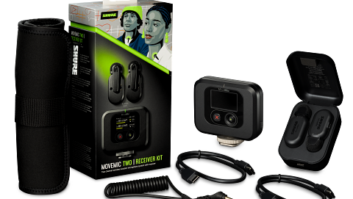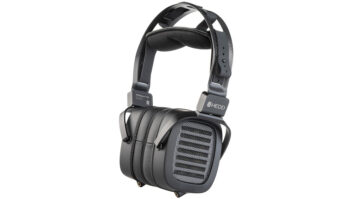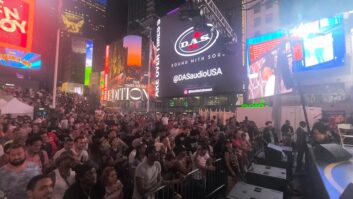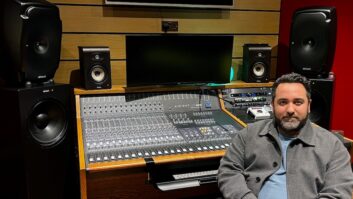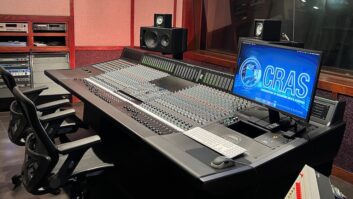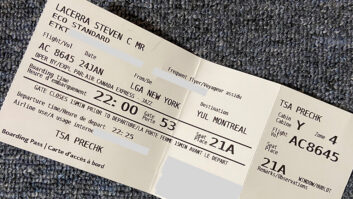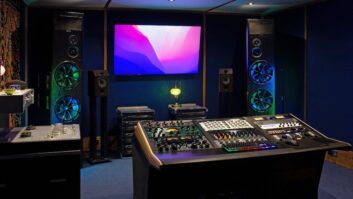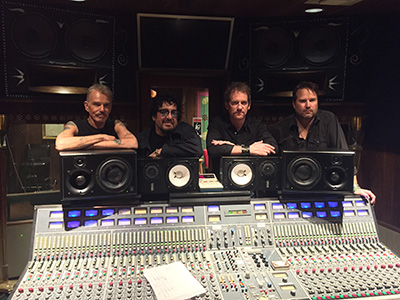
Some people might call it schizophrenic, some might call it bi-polar. Heck, Billy Bob Thornton has even called the new Boxmasters project ‘Somewhere Down the Road’ those things. But the double album—one disc leaning toward ’60s pop and the other a songwriterly, more country collection—truly represents the musician-actor’s creative bent. He’s not an artist you define, whether it be on film or on record. He’s just Billy Bob Thornton.
Mark Collie’s new label out of Nashville, 101 Ranch Records, gave the band carte blanche to offer up a double disc—a rarity, for sure, these days—and so the group mined some material from as early as 2009, back when the Boxmasters recorded in Thornton’s former Beverly Hills home studio. For the new stuff, and there’s a never-ending supply of it, they went to Henson Studios in Los Angeles because Thornton is comfortable there.
“I had been recording at A&M (Henson’s former name) since about ’98 on different scores from movies and projects,” Thornton says. “That’s where we mixed the first Boxmasters record, so I go way back with the people there, and it’s like a second home.”
The band started the record last August by choosing the previously unreleased recordings. They focused on tracks that worked well with the new material, knowing that on some they would have to re-record parts to make them fit sonically.
“We replayed a few drum tracks and re-sang a few songs and got Brad [Davis] to redo his guitar,” says J.D. Andrew, project engineer and guitarist. “I added some guitar where maybe some of the other songs weren’t in the same vein.” Likewise, “Kathy Won’t Share”—their one humorous song—had originally been recorded for a full-on ’60s record, Thornton says. When they decided to include it on this album, they replaced the Farfisa organ with a Hammond B3.

Tracking for the double-disc, however, was mostly done in the same manner. Thornton supplied all lead vocals and most high backgrounds. Andrew sang low harmonies and oohs and aahs.
“All songs start out as an acoustic guitar and vocal scratch,” Andrew explains. “I play acoustic guitar and Billy sings it so we have the structure and tempo just for placement. Then we do pretty much everything separately. Billy plays drums and tambourine to that scratch track. We then start layering. I’ll put on a better acoustic guitar part and I’ll usually double with the 12-string acoustic on most songs, or even two 6-string acoustics and two 12-strings. On these songs, it felt like I wanted to get that kind of Jeff Lynne Traveling Wilburys acoustic guitar sound, really bright, no bottom end, lots of guys strumming. Then I will play bass to that and any electric rhythm guitars we feel are necessary. That usually involved one electric rhythm and some sort of 12-string electric part.”
Thornton then sings his lead vocal and harmonies and Andrew adds his harmonies. Sometimes songs are sent to Commerce, Texas, where Brad Davis will put his guitar parts on in his bdm studio (Brad Davis Music Studio) and then send it back to Andrew to complete.
Davis replicated Thornton’s former home studio—aka Slash’s studio, as he owned the home prior to Thornton—at his place in Texas, having grown accustomed to its gear from his years as the original Boxmasters engineer. Following the move from L.A., he’s worked on projects at bdm for Mumford & Sons, Pearl Jam and Levon Helm, as well as his own recently released solo record, Brad Davis, a Bluegrass Tribute to George Jones, on Bluegrass Valley Records, distributed on Sony Red.
Davis updated his studio recently to include Pro Tools, taking some advice from producer Daniel Lanois, whom he met at Thornton’s house, by keeping it simple and going straight from his Midas console into the computer.
Davis also recorded some guitar at Henson Studios, typically miked by Andrew with a Neumann U 67 and a Royer 121. For acoustic guitars and piano Andrew uses an AKG C12, and on bass he puts up an Evil Twin DI and a FET 47 on the Ampeg B15 cabinet.
On Thornton’s drums, in the kick he uses either a Shure KSM313 ribbon or a Sennheiser 421 into an 1176 or a dbx 160. Outside the kick he uses a FET 47 into an 1176 or dbx 160. On top of the snare he uses a Heil PR 30 into 1176 and on the snare bottom a Neumann KM 84 or Sennheiser 441.

Andrew says Thornton has his cymbals very low and almost on top of the toms, making it difficult to “cram a mic in,” so he uses Sennheiser 409s on the toms because they’re flat. Overheads are U 67s. On the hi-hats and ride cymbals he uses KM 84s and room mics are M 49s, Royer 122 ribbon or 67s into a Neve 33609 or Chandler TG1 compressor.
“On vocals it’s always U 47, 1073, LA-2A, straight to tape,” Andrew says.
Tracks were recorded in Henson Studios B and D direct to Pro Tools, with some premixing done at Andrew’s kitchen and the rest at Henson Studio D. Andrew’s kitchen—which he calls Ye Resto! Kitchen Mobile—is where he does most of his comping and initial mixing. Then he moved over to Henson. The two records, he says, have their own sonic qualities. The two-disc set was released in April.
“When I mix, I tend to use a combination of UAD plug-ins and the Maag EQ plug-in. Throw on a little slap delay and that’s pretty much it,” he says. “But the moody record is a little more sparse, so I could put more space on things. I could use more reverb. I started using the Exponential Audio Reverb R2, and I found a setting called Guitar Wash that’s real neat; I used it a lot on that record. On the rock ’n’ roll record, I had to be a little more aggressive with the guitars and drums, somewhat smashed up in your face.”
Thornton, who was a musician before he was an actor, says there were few challenges to making the record, and he has enough songs to jump into another one. The lack of a home studio, however, has had its pros and cons.
“Having a studio at home, you can tend to do too much,” Thornton says. “It becomes too much of a safe haven and you can start to take it for granted a little bit. When you go to a studio outside your home, it feels like you are going to work.”
But mostly, the move from his Beverly Hills home was for his 10-year-old daughter, Bella, who he says is into paleontology and entomology.
“She wanted a place where she could be in nature, so we moved up into Mandeville (Canyon), and she loves it there,” he says. “It doesn’t have a studio and it isn’t as big, but it feels more like a home. The other house felt more like a venue.”
Yet, having to go to a studio interrupts his favorite role—that of being a dad.
“When we’d do a run of five or six days in a row in the studio, it got tough because I read stories to her every night. It’s tough to be away, although that’s not as tough as touring. As I get older and she grows up more, it’s harder and harder to want to work,” he admits. “I told [my wife] Connie this just recently: If I could do exactly what I wanted to, it would be to win the lottery and just record music, not even go on tour, and do one movie a year and be a dad.”

